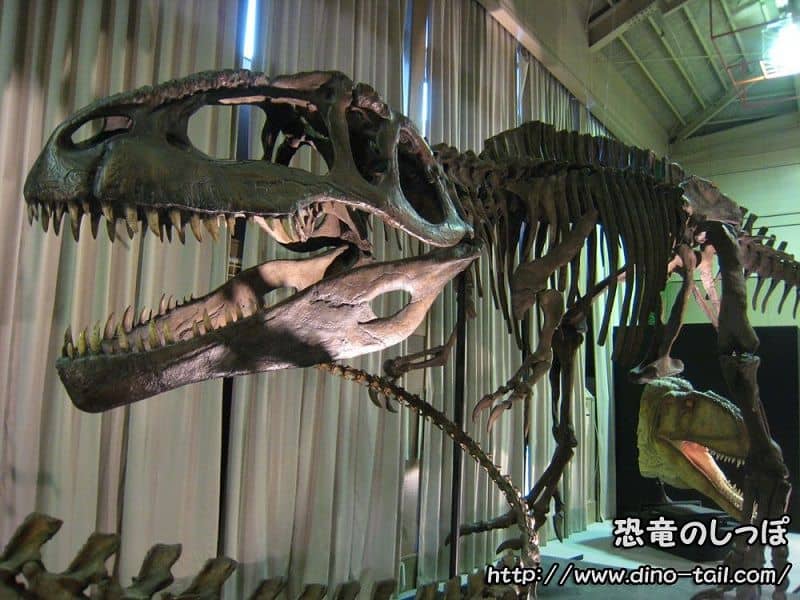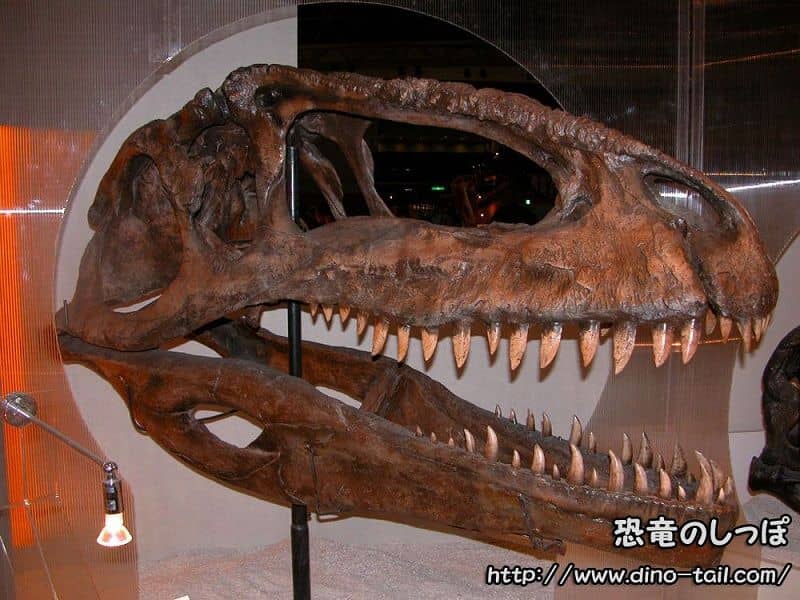About Giganotosaurus
| Scientific Name (Genus) | Giganotosaurus |
| Meaning of Name |
Giant southern lizard
Gigas (giant) [Greek] - notos (south) [Greek] - saurus (lizard) [Greek] |
| Classification | Saurischia, Theropoda ( Carcharodontosauridae ) |
| Total Length | Approx. 13m |
| Diet | Carnivorous |
| Period | Late Cretaceous |
| Species | Giganotosaurus carolinii |
| Year of Paper Publication | 1995 |
| Genus Name Publication | Coria, Rodolfo A.; Salgado, Leonardo. (1995). A new giant carnivorous dinosaur from the Cretaceous of Patagonia. Nature, 377. |
Characteristics
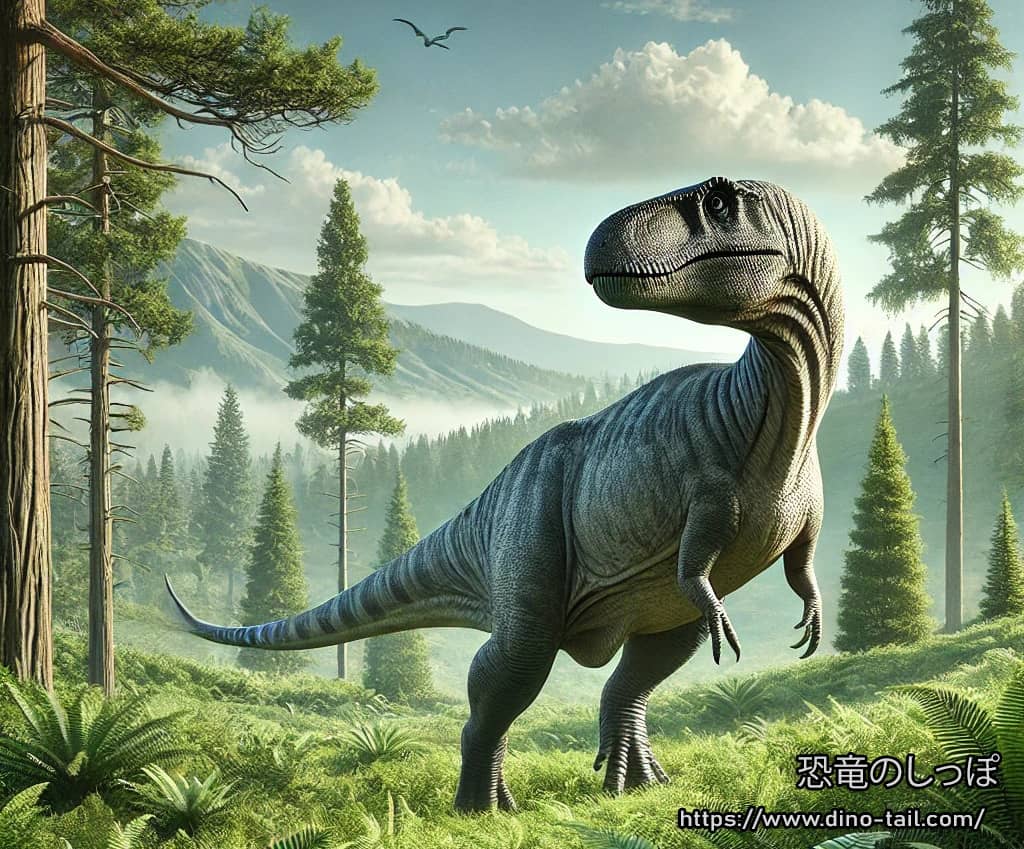
Powered by DALL-E3, 2024.
Giganotosaurus was one of the largest theropod dinosaurs. It reached a total length of about 13m, and its size is often compared to the famous Tyrannosaurus rex. While Giganotosaurus was slightly longer, Tyrannosaurus had a more robust skeleton and was heavier.
The difference between the two is clearly reflected in their hunting styles. While the teeth of Tyrannosaurus were "crushers" that could break bone, the teeth of Giganotosaurus were thin and sharp like "steak knives." Also, the brain size (especially the parts related to smell and sight) was larger in Tyrannosaurus, suggesting it had more sophisticated senses. Giganotosaurus was a hunter that specialized in pack coordination and a strategy of causing its prey to bleed out, rather than relying on brute strength or intelligence.
While "the teeth of Tyrannosaurus were strong and could crush the bones of its prey," "the teeth of Giganotosaurus were thin and sharp," suited for "slicing through the flesh of its prey." Since it was found near Titanosaurian sauropods, it is suggested that it may have preyed on animals larger than itself.
Dinosaurs of the African and South American Continents
Giganotosaurus belongs to the family Carcharodontosauridae within the superfamily Allosauroidea. Its skull is more similar in features to the African dinosaur Carcharodontosaurus than to the North American Tyrannosaurus.
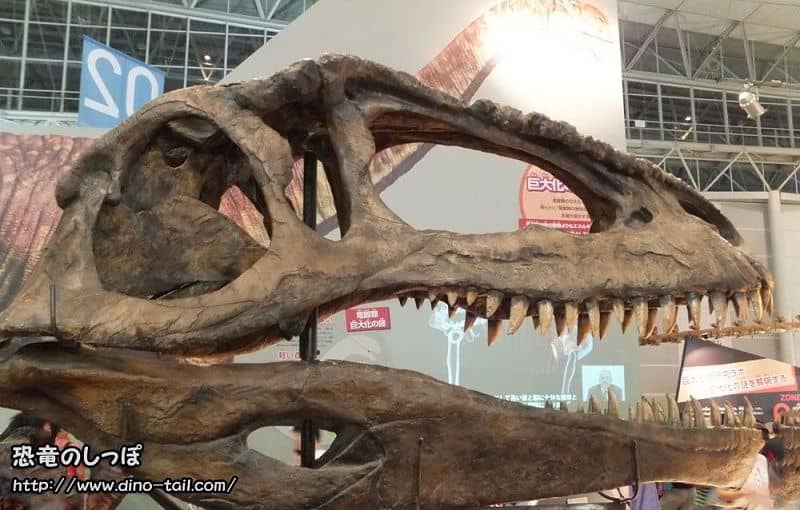
The close relationship between the African dinosaur Carcharodontosaurus and the South American dinosaur Giganotosaurus also supports the idea that the two continents were connected by land until a relatively late period.
Hunting Method: Attacking Giant Prey in Groups
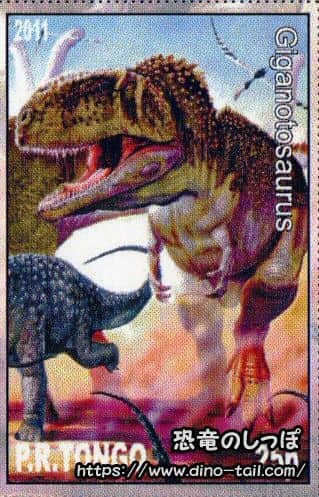
Clues as to how Giganotosaurus hunted some of the largest sauropods in Earth's history, such as Argentinosaurus, have been found in the fossils of its close relatives.
Mapusaurus , a dinosaur extremely closely related to Giganotosaurus, has been discovered in the same Argentine formation in a bonebed containing multiple individuals from juvenile to adult. This is strong evidence that they lived in groups, such as family units, rather than alone.
From this, it is highly likely that Giganotosaurus also did not tackle giant sauropods alone, but hunted in cooperative packs. They may have employed a tactic of surrounding their prey, inflicting deep wounds one after another with their knife-like teeth, and waiting for the massive animal to collapse from blood loss and exhaustion. It would have been a terrifying sight, like a "pack of land sharks."
Discovery and Publication
In 1993, amateur fossil hunter Rubén D. Carolini found a tibia fossil in the Candeleros Formation badlands near Villa El Chocón in Neuquén Province, Patagonia, Argentina. After being notified of the discovery, Argentine paleontologists Rodolfo Coria and Leonardo Salgado were dispatched to the site in 1994 for investigation.
About 70% of the skeleton was preserved, and they excavated the vertebral column, chest, pelvis, and femurs. These fossils were cataloged under the specimen number MUCPv-Ch1.
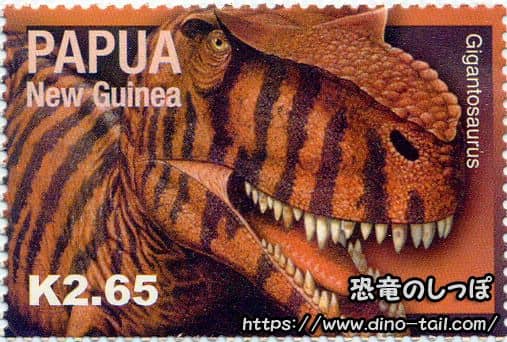
In 1995, Coria and Salgado described it as a new genus and species, Giganotosaurus carolinii. The genus name "Giganotosaurus" means giant southern lizard, and the species name "carolinii" is in honor of the discoverer. At the request of the discoverer Carolini, specimen MUCPv-Ch1 is housed and displayed at the Ernesto Bachmann Paleontological Museum, which was built near the discovery site.
Giganotosaurus Stamp & Fossil Gallery
